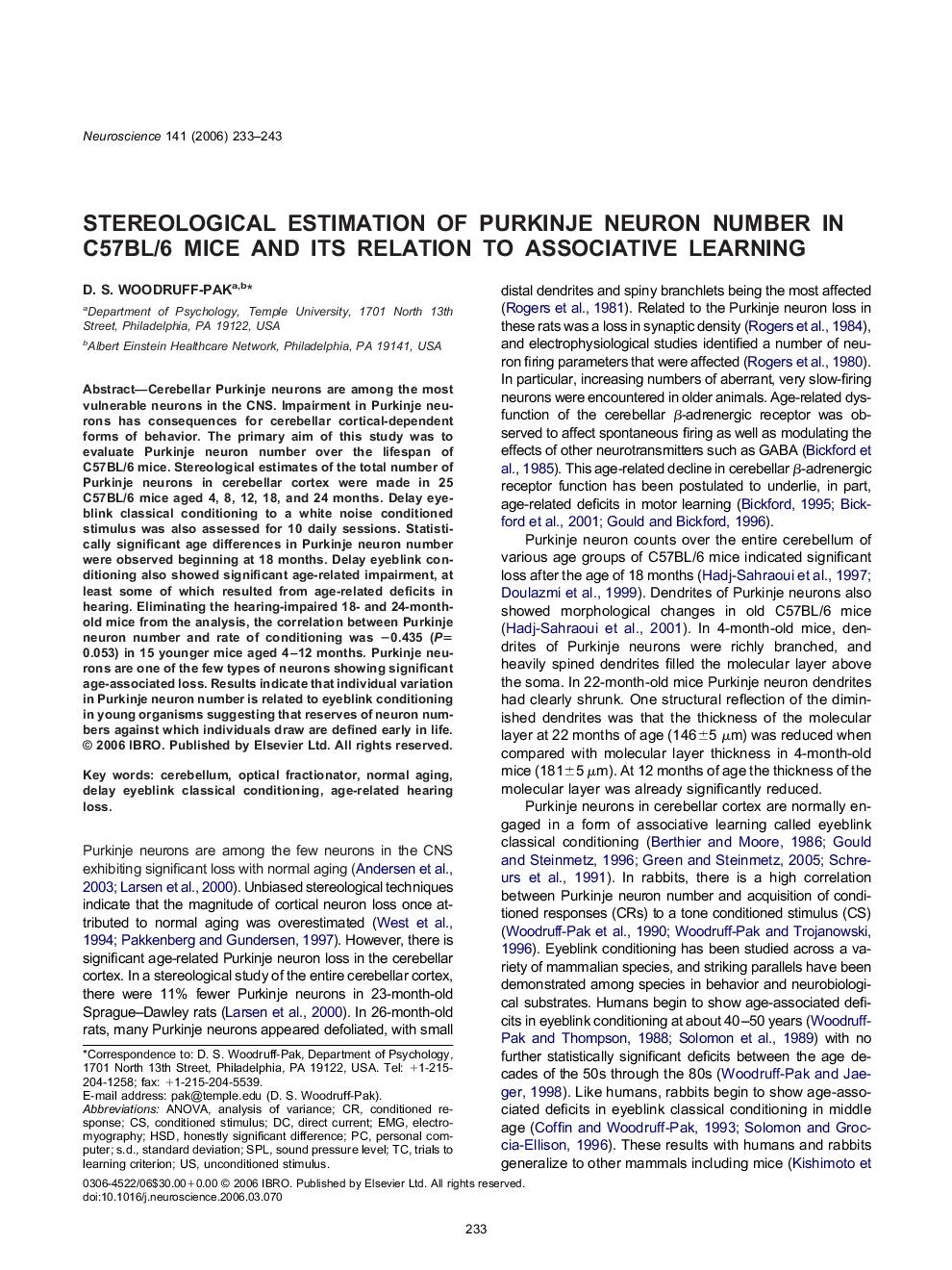| Article ID | Journal | Published Year | Pages | File Type |
|---|---|---|---|---|
| 4342266 | Neuroscience | 2006 | 11 Pages |
Abstract
Cerebellar Purkinje neurons are among the most vulnerable neurons in the CNS. Impairment in Purkinje neurons has consequences for cerebellar cortical-dependent forms of behavior. The primary aim of this study was to evaluate Purkinje neuron number over the lifespan of C57BL/6 mice. Stereological estimates of the total number of Purkinje neurons in cerebellar cortex were made in 25 C57BL/6 mice aged 4, 8, 12, 18, and 24 months. Delay eyeblink classical conditioning to a white noise conditioned stimulus was also assessed for 10 daily sessions. Statistically significant age differences in Purkinje neuron number were observed beginning at 18 months. Delay eyeblink conditioning also showed significant age-related impairment, at least some of which resulted from age-related deficits in hearing. Eliminating the hearing-impaired 18- and 24-month-old mice from the analysis, the correlation between Purkinje neuron number and rate of conditioning was â0.435 (P=0.053) in 15 younger mice aged 4-12 months. Purkinje neurons are one of the few types of neurons showing significant age-associated loss. Results indicate that individual variation in Purkinje neuron number is related to eyeblink conditioning in young organisms suggesting that reserves of neuron numbers against which individuals draw are defined early in life.
Keywords
Related Topics
Life Sciences
Neuroscience
Neuroscience (General)
Authors
D.S. Woodruff-Pak,
